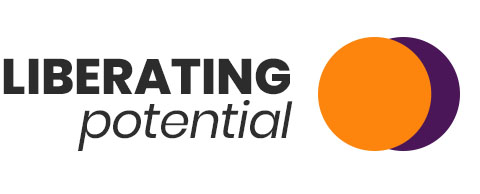In 1970 Arnold Beisser MD published a short article called the Paradoxical Theory of Change. Based on and explaining the Gestalt therapy method of Fritz Perls, he summarises:
‘… that change occurs when one becomes what he is, not when he tries to become what he is not. Change does not take place through a coercive attempt by the individual or by another person to change him, but it does take place if one takes the time and effort to be what he is — to be fully invested in his current positions. By rejecting the role of change agent, we make meaningful and orderly change possible.’
Given the importance of change leadership and management capabilities in organisations, I believe it is worth reflecting on the implications of this theory, which is derived from practice that I have experience of making work.
Take for example someone I am coaching who is unhappy at work and in a dilemma about whether to stay in their current role or to leave the team/organisation. I could take a classic problem-solving approach to help them work out the solution – exploring the current situation, examining the pros and cons of staying or leaving, looking at options, developing a vision for the future and planning actions. All very logical, tried and tested. However, this will not necessarily resolve the internal conflict – stay or go – at sensory and emotional levels and achieve an integrated position. The decision will be a choice of options and may contain the seeds of the same dilemma, an attempt to grow grass that’s greener.
So what I might do with their permission is ask them alternately to be the person that wants to stay and then the person who wants to leave and to run a dialogue between the two. I will probably ask them to give a name to each of these positions – for example, ‘Ms Resilient’ and ‘Ms Freedom’ – names that in themselves may indicate the dynamic forces at work in the situation. I will facilitate the dialogue, asking questions to deepen understanding and explore their thinking, feelings and behaviour. By running this ‘two chair’ dialogue they invest fully in these positions, being who they are in the moment, and in my experience often achieve integration and resolution of the internal conflict. Following this it is often obvious what they want without having spent a lot of time and effort on a problem-solving process that can still leave them feeling uncertain and dissatisfied. The direction eventually comes from a naturally changed place rather than change being discussed and imposed by either of us. The latter may bring results but the former is more self-determined, insightful and satisfying and as such the actions agreed will be more effortless.
There are many implications of the paradoxical theory of change for organisation change – not least that most leaders and consultants are referred to as ‘agents of change’ and many organisation change efforts fail to deliver the desired outcomes. Yes organisations need change programmes, but when it comes to people and culture the same logical methods won’t necessarily reap the desired results. Behaviour is not a technology. Beisser went on to argue that the paradoxical theory of change applies as much to an organisation, community or society as it does to the individual. The need is to recognise and hear all the different interests in a change situation – including the alienated parts often perceived as ‘resistant’ – and through meaningful engagement achieve understanding and direction. Many systemic group interventions like Search Conference and Open Space are based on this principle. A central theme in my book is the need to develop open teams with the right balance of challenge and support behaviours for organisation change to succeed. See also in my previous blog ‘Want an engaged workforce?’ the point about helping people to see differently in a changing context.
Many commentators see leaders providing direction, but where should this direction come from? Is it right to set a vision/direction and then encourage people to sign up and follow – to ‘align’ themselves – or is the start point a process that includes all the different players, takes account of different positions and perspectives, achieves integration and results in direction? The leader needs to have a voice, but the willingness to be who they are and to help others to do the same may be a necessary condition for meaningful and successful change to happen.

